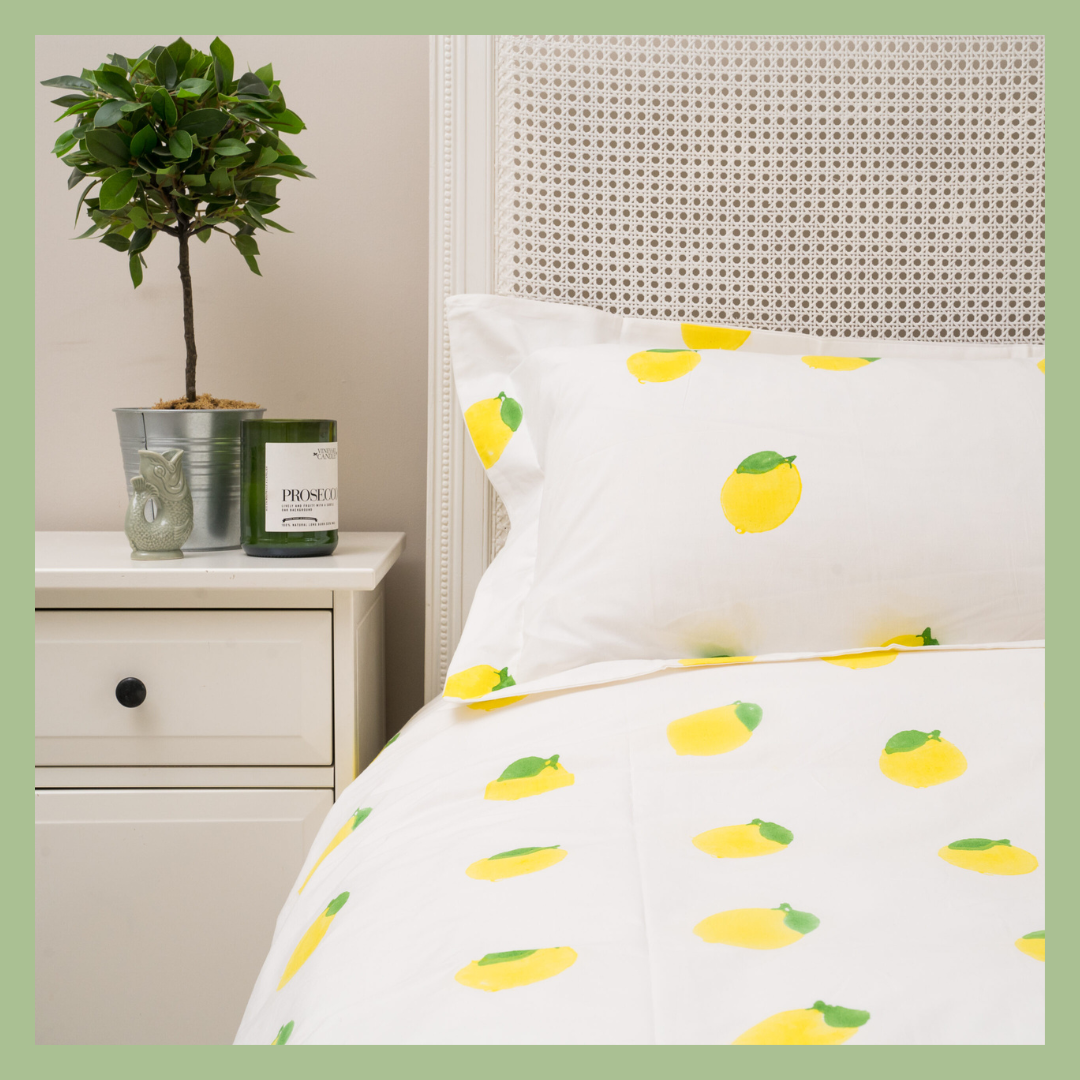The Art and Brief History of Block Printing by Sophie Holcroft
Block printing is an art form that has stood the test of time. It is a printing technique that involves stamping fabric with carved wooden blocks. These blocks are works of art in themselves!
They are created by skilled and patient craftsmen, by drawing the design onto paper, attaching this to the block, and then carving the design. Each colour and element of the design requires a new block. You can only imagine how much time and energy goes into every piece. The dye is then applied using one of three methods: The direct method is where the block is dipped into dye and then stamped onto the fabric. This method is used to create our products.
Discharge printing is used to create a white pattern on a coloured background, by using a bleaching agent on the blocks and then stamping this.
Resist printing involves a waxy paste being stamped, the fabric is then dyed and once it has dried, the paste can be removed, revealing the pattern.
These skills and knowledge are passed down through generations and so these fabrics not only look beautiful in your home but, also reflect stories of the past.
The exact date as to when the technique arose is unknown but the earliest record of block printing is the book, the Diamond Sutra, 868 AD. Printing onto fabric most likely originated in China 4,000 years ago, but it was India where block printing experienced a boom. One could say, this is due to the Mughal Empire’s influence in the early 16th Century, as they used textiles as a status symbol. In particular, emperors loved block printed fabrics such as Shah Jahan who built the Taj Mahal. Pre-Mughal influence, the designs were mainly geometric forms however, the Mughal period introduced new forms such as animals and fruit.
With the arrival of the British East India Company in the mid-19th Century, trade began between India and Europe, resulting in the technique spreading worldwide. However, the Industrial Revolution resulted in technological advances in the UK, such as the mechanical printer. The Indian handmade textile industry could not compete with such large-scale production. Some were even forced to shut down and so the local industry was diminished.
However, there was a revival in the 1960s and 70s. The flower-power days meant there was a renewed fascination with Eastern spirituality and travellers brought the love for block printed textiles back to Europe.
Activist Pupul Jayakar along with designer and architect Charles Eames are examples of those who have helped stabilise the Indian creative industry. They presented the Indian Government with The India Report, which looks at ways to improve the creative industries. They both had a strong influence in starting the National Institute of Design in 1961, where they work to protect and share the appreciation of block printing. Block printing holds potential for the future as in its nature, it is sustainable and so is suitable for the current climate. Block printing is a technique but also represents the power of craftsmanship in the face of colonisation.
LivvyB believes in the authenticity of block printing and celebrates the fact they are done by hand, hence having the outlet. I asked Livvy why she liked using block print for her products and she said, “It’s like art. Every piece is a one-off and individual even if it appears the same. The skill to apply a print is mesmerising and I just love the vibrant use of colours.”
Show Livvy B's Block Printed Sleepwear, Loungewear and Accessories at www.livvyb.co.uk




